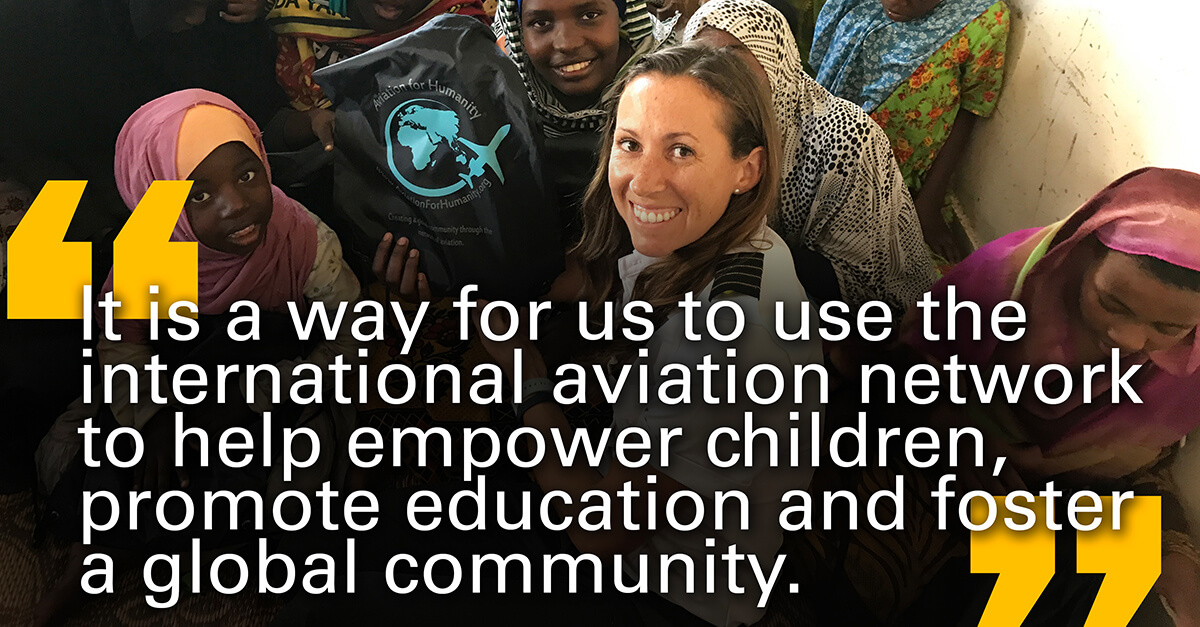Sept. 17, 2019
Kimberly Perkins, a business airplane captain, has been flying for more than 15 years. She was in a classroom of pilots a few years ago studying aircraft systems, and a “light bulb went off” when the instructor mentioned that the long-range, large-cabin airplane she flies generates enough electricity to power 1,600 60-watt light bulbs at once.
Perkins remembers thinking that there are a lot of places in the world that don’t have enough power to light even one 60-watt bulb. While pondering the question of how the aviation industry could give back to these communities, her non-profit Aviation for Humanity was born.
Aviation for Humanity works with crewmembers and business travelers who are flying to a developing nation. After vetting a school in need in the traveler’s destination country, the logistics of coordinating the visit are made, and backpacks full of school supplies are acquired through monetary donations. Once in country, the traveler delivers the backpacks to the students.

“The personal satisfaction for me comes from taking people of different backgrounds and experiences, and connecting them together in support of children and education,” Perkins said. “It is a way for us to use the international aviation network to help empower children, promote education and foster a global community.”
Aviation for Humanity has delivered more than 500 backpacks containing roughly 2,500 crayons, 1,000 pencils, 300 pounds of food and 450 pounds of clothing to Brazil, Costa Rica, Tanzania, Morocco, Nigeria, Kenya, Thailand, Malaysia and Vietnam.
The organization is a grassroots effort that always needs business aviation operators to deliver these critical supplies to children in the developing world.


 International Business Aviation Council Ltd.
International Business Aviation Council Ltd.